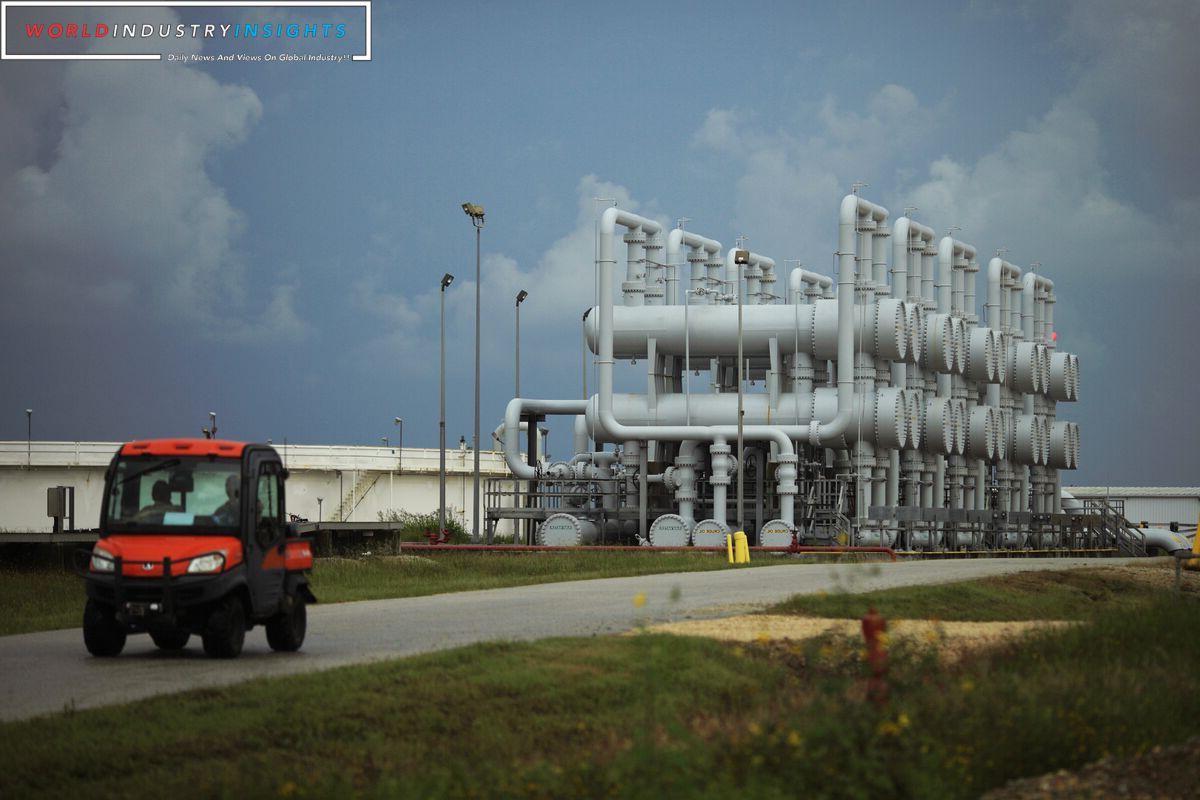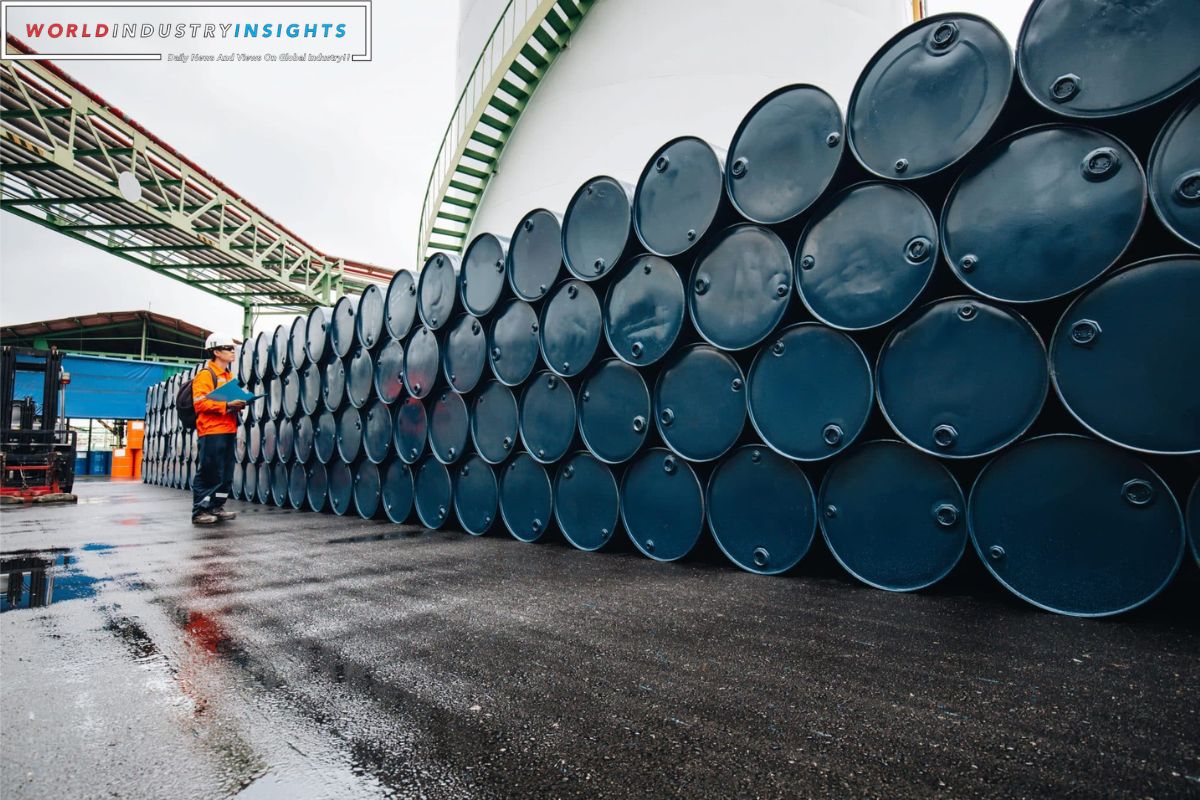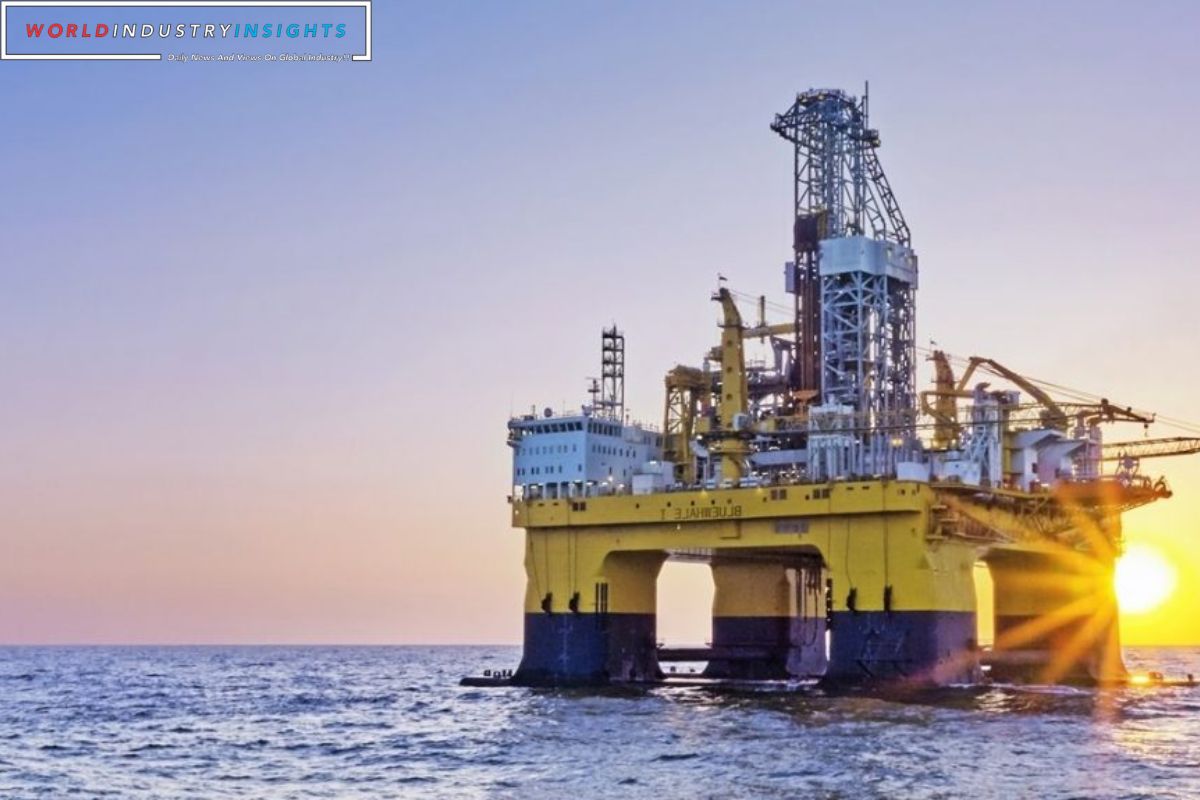Bolstering Energy Security: The recent purchase of 3 million barrels of oil by the United States for its Strategic Petroleum Reserve is a strategic move that signals a commitment to bolstering energy security.
With global oil prices fluctuating and geopolitical tensions rising, it is imperative for the country to maintain a robust reserve of energy resources.
This latest acquisition by the Department of Energy reflects a proactive approach to market dynamics and energy needs, ensuring that the nation is well-prepared to withstand potential disruptions to the oil supply.
As we delve into the details of this strategic reserve replenishment, it becomes clear that these efforts not only contribute to energy resilience but also demonstrate responsible resource management.
But what does this mean for the future of the country’s energy security? The answer lies in the comprehensive nature of these efforts and the potential impact they may have on domestic and international energy markets.
Key Takeaways
- The Department of Energy’s strategy for oil purchases aims to secure advantageous oil purchases and ensure cost-effective replenishment of the strategic petroleum reserve, with the objective of maximizing benefits for taxpayers.
- The replenishment of the strategic petroleum reserve is important for preparedness in the event of disruptions, optimal procurement strategy, efficient management, and long-term energy security. It helps to mitigate the impact of unforeseen events, maintain stability, and reduce dependence on foreign sources.
- The strategic approach to market dynamics and energy needs involves carefully navigating the procurement of 3 million barrels, balancing energy security with economic considerations, and considering the influence of supply and demand, geopolitical tensions, and economic conditions. The objective is to replenish the reserve without burdening the public, acknowledging the importance of market dynamics.
- The efforts towards energy resilience and responsible resource management include the strategic petroleum reserve, responsible resource management, fiscal prudence, and long-term planning. These contribute to mitigating the impact of disruptions, efficient resource utilization, cost savings, and adaptability to market dynamics.
Also Read: US Oil Production Hits Record Soaring Amid Angolas Shock OPEC Exit
Department of Energy’s Strategy to Secure Favorable Oil Purchases
The Department of Energy strategically aims to secure advantageous oil purchases, ensuring cost-effective replenishment of the strategic petroleum reserve and maximizing benefits for taxpayers.
With the announcement of the plan to acquire 3 million barrels of oil for January 2024 delivery, the DOE is taking proactive steps to bolster the nation’s energy security. By focusing on securing oil at advantageous rates, the department is not only protecting the strategic petroleum reserve but also ensuring that taxpayers receive the maximum benefits.
This strategy aligns perfectly with the DOE’s mission to maintain a reliable and affordable energy supply for the American people. In a world where oil prices can fluctuate rapidly, it is crucial for the government to be strategic and proactive in its oil purchases.
Replenishing Strategic Petroleum Reserve for Energy Security
With the Department of Energy’s strategic focus on securing advantageous oil purchases, it is evident that replenishing the strategic petroleum reserve plays a pivotal role in ensuring long-term energy security. Here are four reasons why replenishing the reserve is crucial:
- Preparedness for disruptions: The decision to bolster the strategic petroleum reserve highlights the commitment to being prepared for any potential disruptions in the energy supply chain. By replenishing the reserve, the United States can mitigate the impact of any unforeseen events and ensure a steady supply of oil.
- Optimal procurement strategy: The procurement strategy aims to optimize the acquisition of oil resources while ensuring fiscal responsibility. By replenishing the reserve, the Department of Energy can strategically purchase oil at advantageous prices, maximizing the value for taxpayers.
- Efficient management: The focus on managing the reserve efficiently is crucial in addressing potential disruptions. By replenishing the reserve, the United States can better respond to emergencies and maintain energy stability.
- Long-term energy security: Replenishing the strategic petroleum reserve is essential for long-term energy security. It ensures that the United States has a sufficient supply of oil reserves to rely on in times of need, reducing dependence on foreign sources and enhancing national security.
Strategic Approach to Market Dynamics and Energy Needs
Taking a strategic approach to market dynamics and energy needs, the United States is carefully navigating the procurement of 3 million barrels for the strategic petroleum reserve. This measured approach demonstrates the government’s commitment to balancing the nation’s energy security with economic considerations.
By making oil purchases when economically favorable for taxpayers, the government ensures that the strategic petroleum reserve is replenished without burdening the public. This strategic approach acknowledges the importance of market dynamics, recognizing that energy prices are influenced by various factors such as supply and demand, geopolitical tensions, and economic conditions.
Contributions to Energy Resilience and Responsible Resource Management
The United States demonstrates its commitment to energy resilience and responsible resource management through proactive measures.
Here are four ways the country contributes to these efforts:
- Strategic Petroleum Reserve: The United States maintains a well-stocked strategic petroleum reserve, which plays a crucial role in mitigating the impact of disruptions or geopolitical events affecting oil supplies. This reserve ensures that the country can quickly respond to any energy crisis and provides a crucial buffer for the economy.
- Responsible Resource Management: The United States reinforces its commitment to responsible resource management by carefully monitoring and managing its energy reserves. This approach ensures that resources are utilized efficiently, minimizing waste and maximizing long-term sustainability.
- Fiscal Prudence: The United States’ proactive approach to energy resilience also includes fiscal prudence. By investing in strategic reserves during periods of low oil prices, the country takes advantage of market dynamics to secure energy supplies at a lower cost, saving taxpayer dollars in the long run.
- Long-term Planning: The United States takes a forward-looking approach to energy resilience, developing comprehensive plans and strategies to address potential challenges in the future. This proactive stance allows the country to anticipate and adapt to changing market dynamics, ensuring the stability and security of its energy resources.
Through these measures, the United States demonstrates its commitment to energy resilience and responsible resource management, safeguarding its energy security and contributing to a more sustainable future.
Comprehensive Efforts and Future Outlook Of Bolstering Energy Security
To further strengthen its commitment to energy resilience and responsible resource management, the United States now turns its focus to comprehensive efforts and future outlook.
The recent purchase of 3 million barrels for the strategic petroleum reserve is a significant step forward in fortifying national energy security. This achievement showcases the government’s dedication to ensuring a stable and reliable energy supply for the country.
By replenishing the reserve through direct purchases and returns from oil companies, the United States is taking proactive measures to safeguard against potential disruptions in the global oil market.
Moreover, the successful negotiation of the cancellation of congressionally mandated sales from the reserve demonstrates the government’s commitment to responsible resource management.
Looking ahead, the finalization of contracts for the purchase of these barrels signifies strategic progress and lays the foundation for a more secure energy future.
Conclusion
Overall, the United States’ decision to purchase 3 million barrels of oil for its strategic reserve is a strategic move to enhance energy security. By replenishing the Strategic Petroleum Reserve, the country can better manage market dynamics and meet energy needs.
This contributes to energy resilience and responsible resource management. The comprehensive efforts made in bolstering energy security are commendable, and it will be interesting to see how these initiatives shape the future outlook.
Our Reader’s Queries
What are the four factors of energy security?
Energy security has evolved from its original focus on supply security to encompass a broader range of factors, commonly known as the “four As” of energy security – availability, affordability, accessibility, and acceptability (as outlined in Box 2.1) [19, 20, 27]. These factors are crucial in ensuring that energy is not only accessible and affordable but also acceptable to all stakeholders. By considering these four As, we can ensure that energy security is achieved in a sustainable and equitable manner.
What are the strategies to improve energy security?
Boosting energy security can be achieved through various strategies. These include reducing reliance on imports by switching to local supplies, curbing domestic energy demand, importing from multiple sources, and partnering with dependable energy supplier nations. Additionally, utilizing innovative technologies and renewable energy sources can also contribute to a more secure energy future. By implementing these measures, countries can safeguard their energy supply and ensure a stable and sustainable energy future.
What are the different types of energy security?
According to the International Energy Agency (IEA), energy security has two key components: long-term and short-term energy security. Long-term energy security focuses on investments in energy supply and how it aligns with economic and environmental needs.
What are the pillars of energy security?
Energy security is built on three key pillars: reliability, resilience, and efficiency. These pillars are essential for ensuring that our energy needs are met in a sustainable and dependable way. Reliability refers to the consistent availability of energy, while resilience is the ability to quickly recover from disruptions or emergencies. Efficiency, on the other hand, is all about using energy in the most effective and sustainable way possible. By focusing on these three pillars, we can create a more secure and sustainable energy future for ourselves and future generations.




